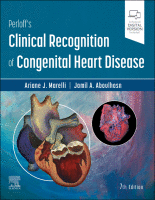Physical Address
304 North Cardinal St.
Dorchester Center, MA 02124

Historical Notes Antonio Maria Valsalva, anatomist and pathologist, was born in 1666 in the historic Emilia-Romagna region of northern Italy. The sinuses that bear Valsalva’s name consist of three small outpouchings in the wall of the aorta immediately above the…

Historical Notes Congenital coronary arterial fistula was described by Krause in 1865 and confirmed by Abbott in 1908 and by Trevor in 1912. Anatomical considerations Coronary arterial fistulas are the most frequent functionally significant congenital malformations of the coronary circulation,…

Historical Notes In 1886, St. John Brooks described two cases of “an abnormal coronary artery arising from the pulmonary artery.” The diagnosis was subsequently called into question when the abnormal communication was attributed to a coronary arterial fistula. The seminal…

Historical Notes In 1593 Giambattista Carcano, Professor of Anatomy in Pavia, an ancient town in northern Italy, described the ductus arteriosus in his book on the great cardiac vessels of the fetus. However, Leo Bottali came to be associated with…

Historical Notes The earliest report that alluded to double outlet right ventricle was published in French in 1703. Ninety years elapsed before an English language publication appeared. In 1793, John Abertheny, an assistant surgeon at St Bartholomew’s Hospital in London,…

Historical Notes Ventricular septal defects with obstruction to right ventricular outflow encompass a wide range of anatomic malformations and their physiologic and clinical expressions. Non-restrictive ventricular septal defects occur with pulmonary stenosis that varies from mild to severe to complete…

Historical Notes In 1879, Henri Roger wrote, “ A developmental defect of the heart occurs from which cyanosis does not ensue in spite of the fact that a communication exists between the cavities of the two ventricles and in spite…

Historical Notes In 1769, Giovanni Battista Morgagni described pulmonary stenosis with a patent foramen ovale, and in 1848 Thomas Peacock described Contraction of the Orifice of the Pulmonary Artery and Communication Between the Cavities of the Auricles by a Foramen…

Historical Notes Galen was aware of the foramen ovale and its normal postnatal closure since 100 years AD. It was not until 1513 that Leonardo da Vinci characterized it, writing, “ I have found from left auricle to right auricle…

Historical Notes In June 1864, a 19-year-old laborer was admitted to the All-Saints Hospital in Breslau (now Wroclaw), Poland, where he died 8 days later. Wilhelm Ebstein, then an assistant physician at All-Saints, performed a postmortem examination the following day…